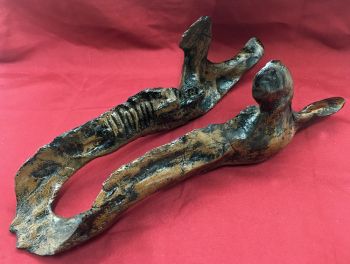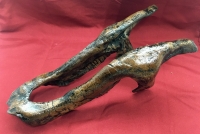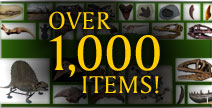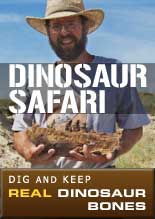
Maiasaura (meaning "good mother lizard") is a large herbivorous hadrosaurid ("duck-billed") dinosaur genus that lived in the area currently covered by the state of Montana in the Upper Cretaceous Period, about 76.7 million years ago.
The first fossils of Maiasaura were discovered in 1978. In 1979, the genus was named. The name refers to the find of nests with eggs, embryos and young animals, in a nesting colony. These showed that Maiasaura fed its young while they were in the nest, the first time such evidence was obtained for a dinosaur. Hundreds of bones of Maiasaura have been dug up.
Adult Maiasaura were about nine meters long. Young animals walked on their hind legs, adults on all fours. Maiasaura was probably closely related to Brachylophosaurus. They had a flat beak typical of hadrosaurids, and thick noses. They had a small, spiky crest in front of the eyes. This crest may have been used in headbutting contests between males during the breeding season.
Maiasaura were herbivorous. They were capable of walking both on two (bipedal) or four (quadrupedal) legs. Studies of the stress patterns of healed bones show that young juveniles under four years old walked mainly bipedal, switching to a mainly quadrupedal style of walking when they grew larger. They appeared to have no defense against predators, except, perhaps, its heavy muscular tail and their herd behavior. Herds were extremely large and could have comprised as many as 10,000 individuals. Maiasaura lived in an inland habitat.
A skull of Maiasaura, specimen PU 22405, was discovered by Laurie Trexler in 1979 and described by dinosaur paleontologists Jack Horner and Robert Makela as the holotype of a new species. They named the type species Maiasaura peeblesorum. The generic name refers to the goddess Maia, the "Good Mother"; to emphasize this, they used the feminine form of saurus: saura. The specific name honors the families of John and James Peebles, on whose land the finds were made. The generic name refers to Marion Brandvold's discovery in 1978 of a nest with remains of eggshells and babies too large to be hatchlings. These discoveries led to others, and the area became known as "Egg Mountain", in rocks of the Two Medicine Formation near Choteau in western Montana. This was the first proof of giant dinosaurs raising and feeding their young.
Over 200 specimens, in all age ranges, have been found. The announcement of the discovery of Maiasaura attracted renewed scientific interest to the Two Medicine Formation and many other new kinds of dinosaurs were discovered because of the increased attention.
resin
12.5 x 5 x 4.5 inches high
Item 520
Category: Replicas
Type: Bones
Phylum: Vertebrates
Class: Dinosaurs
MORE PHOTOS:




Now Over 1,000 Items!
PrehistoricStore.com offers the largest selection of replica fossils and other fossil-related products anywhere in the world!
Download a Full Catalog (3MB PDF)
OVER 260 PAGES OF REPLICAS AND MORE!
